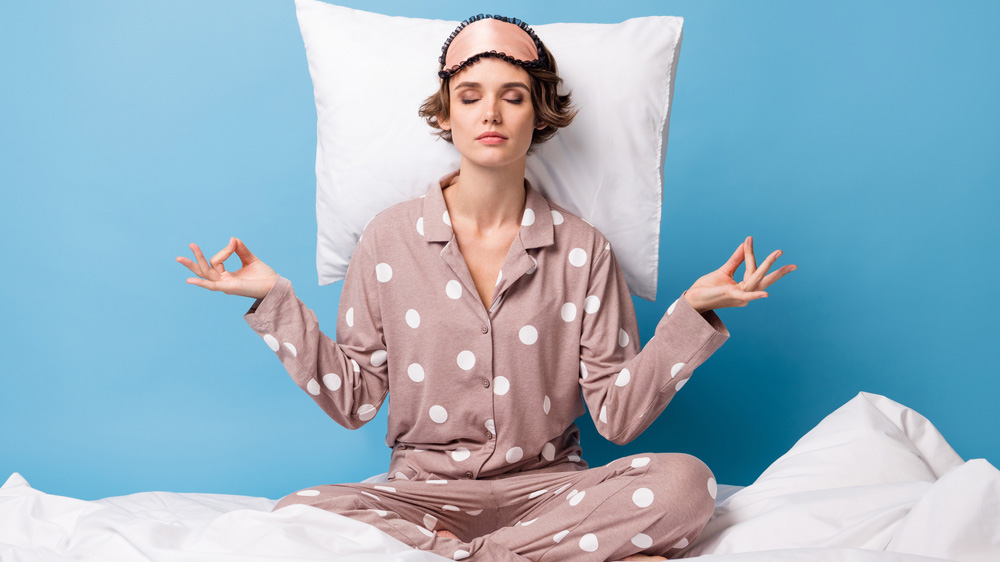Sleep, that sweet nectar essential to our well-being, isn’t always easy to find. In a world dominated by stress and screens, sleep relaxation techniques prove to be invaluable allies. What if we told you that simple and enjoyable tricks could transform your nights into fairy tales? From controlled breathing to sophrology, and even some quirky methods, embark on a journey toward deep and restorative sleep. Follow the guide—we promise the Sandman will never be far away…
Breathing: An Art to Master
Breathing seems simple. Yet, breathing properly to relax requires a bit of technique. Deep breathing exercises are powerful tools to calm the nervous system and prepare the body for sleep.
- The 4-7-8 Method: Ideal for calming a racing mind. Inhale for 4 seconds, hold your breath for 7 seconds, and then exhale slowly for 8 seconds. This yoga technique helps reduce anxiety and induces deep relaxation.
- Heart Rate Coherence: A scientific method where you breathe at a specific rhythm, six breaths per minute. It helps stabilize the autonomic nervous system and lower cortisol, the stress hormone.
Breathing is more than just a vital function. It’s a magical key for cloudless sleep.
Mindfulness Meditation: Awakening to Inner Peace
Close your eyes. Inhale. Focus on the present moment. You’re already on the path to mindfulness meditation. This practice, combining concentration and acceptance, is incredibly effective for avoiding ruminating on daily worries at bedtime.
- Body Scan: While lying in bed, mentally travel through each part of your body. Visualize it, feel it, relax it. This technique, popularized by Jon Kabat-Zinn, helps you anchor in your body and push aside distracting thoughts.
- Guided Apps: If you’re new to meditation, apps like Calm or Petit Bambou can guide you step-by-step.
With mindfulness meditation, the goal isn’t to chase thoughts away but to observe them without judgment. A perfect prelude to a peaceful, deep sleep.
Sophrology: The Body-Mind Rendezvous
Less known than meditation but just as effective, sophrology combines dynamic relaxation techniques, visualizations, and breathing exercises. It’s appreciated for its simplicity and flexibility.
- The Protective Bubble: Imagine yourself enveloped in a soft, safe bubble. You leave tension outside this bubble and immerse yourself in absolute calm.
- Imaginary Journey: Transport yourself to a peaceful place—a beach, forest, or flower-filled meadow. Visualize every detail intensely. This positive visualization invites serenity and promotes falling asleep.
With sophrology, you learn to become an active participant in your well-being. Goodbye, insomnia!
Sounds and Music: Let Yourself Be Rocked
What could be more natural than falling asleep to music? Sounds have almost magical powers over our brain.
- Binaural Beats: Different frequencies sent to each ear, creating brainwave synchronization that’s perfect for sleep. A modern lullaby!
- White and Pink Noise: Constant frequency sounds like rain or waves that mask disruptive noises and calm the mind.
- Relaxing Playlists: Platforms like Spotify offer specific selections for sleep. Whether it’s Chopin, Debussy, or modern compositions, let your ear choose.
Sounds don’t just soften the atmosphere; they resonate within you, creating total immersion into dreamland.
Evening Yoga: Stretch to Sleep Better
A tense body reflects a restless mind… Yoga, with its gentle poses and deep breathing, is an excellent tool to release the day’s tensions.
- Child’s Pose (Balasana): Knees bent under the body, forehead on the ground. This position invites complete relaxation.
- Shoulder Stand (Sarvangasana): Raising your legs to the sky stimulates blood circulation and calms the nervous system.
- Alternate Nostril Breathing (Nadi Shodhana): A gentle breath alternating between left and right nostrils, perfect for centering before bed.
Just a few minutes is enough for your body to say “thank you” and for your mind to gently float toward sleep.
Unconventional Tips: Embrace the Originality
What if you stepped off the beaten path to find Morpheus? Some practices, though unconventional, can yield surprisingly good results.
- Color Therapy: A soft, warm light, like red or orange, stimulates melatonin production.
- Intuitive Writing: Write down your thoughts before bed. It’s a great way to empty your mind.
- Warm Bath: Lowering your body temperature after a bath naturally promotes sleep.
Sometimes, venturing into the unconventional is the spark that changes everything.
Conclusion: An Invitation to Experiment sleep relaxation techniques
Quality sleep is not a fantasy. With these sleep relaxation techniques, you have practical, simple, and adaptable tools at your disposal. Whether you’re a meditation enthusiast, a music lover, or curious about unconventional methods, the key is to listen to your body and treat your evening as a sacred moment. So, are you ready to say goodbye to insomnia and hello to dreams?
Sources :
- National Sleep Foundation – Relaxation techniques to improve sleep
https://www.sleepfoundation.org/sleep-hygiene/relaxation-exercises-to-help-fall-asleep - Mayo Clinic – The role of mindfulness in better sleep
https://www.mayoclinic.org/healthy-lifestyle/consumer-health/in-depth/mindfulness-exercises/art-20046356 - Sleep Foundation – The impact of sound therapy on sleep quality
https://www.sleepfoundation.org/noise-and-sleep/music - Harvard Health – The benefits of yoga for sleep
https://www.health.harvard.edu/blog/yoga-for-better-sleep-20151204961 - Verywell Mind – Guided meditation and breathing exercises for sleep
https://www.verywellmind.com/guided-sleep-meditation-getting-started-4174316


